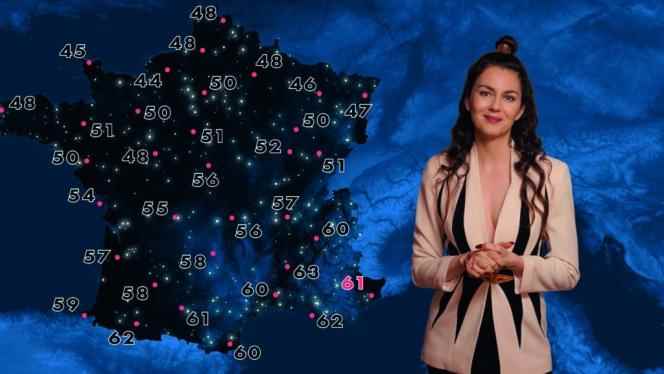THE OPINION OF THE “WORLD” – NOT TO BE MISSED
Of all the “containment films” that have flourished lately in the wake of the pandemic, Bertrand Bonello’s latest feature film is undoubtedly the one that has best managed to pull out of the game. The director of Saint Laurent (2014) seems to have found there the perfect opportunity to go even further in the lightening of his gesture, initiated with Zombie Child (2019) in the form of a nod to the B series, after the lackluster reception of the opera and much criticized Nocturama (2016).
With Coma, he resizes his cinema to the proportions of a bedroom and signs a simple, but falsely modest film, in fact turned towards the interior continent. He even allows himself to reformulate a very old question (at least Platonic): of what substance are today’s dreams made?
A teenager (Louise Labèque, discovered in Zombie Child) dawdles on his bed, between the four walls of his room, in a situation that we identify with the health crisis, but which could have many other explanations (anxiety attack? state of siege?). The confinement, the idleness are conducive to the ramblings, on the flow of which the film connects. So she kills time imagining soap opera plots between her plastic dolls, calling her girlfriends in “video” and, most of the time, hanging out on the Internet, even getting lost in her depths. She follows the chain of a mysterious influencer, Patricia Coma (the extraordinary Julia Faure), halfway between personal development guru and teleshopping presenter, urging her flock to buy all kinds of gadgets, in particular a strange electronic memory game called “Revelator”, like a portal to the other world. Thus it sometimes happens to the young girl to access, without really knowing how, a free zone that looks like a dark forest, a sort of limbo or dark web where disturbing silhouettes roam.
Under the sign of the heterogeneous
Opening with a dedication from the filmmaker to his daughter, Anna, Coma can be seen as an attempt to explore, from the cinema, a very contemporary relationship to images, which would be specific to the young generation, the one who took the full brunt of confinement – a relationship without hierarchy and without contours, where everything is interpenetrates. Through editing, the film, under the sign of the heterogeneous, sails at leisure between different image regimes, passing from live action to animation – sometimes in volumes (the parody soap opera of dolls ), sometimes drawn –, from videos of youtubers to archive images, in this case a famous conference by Gilles Deleuze from 1987 where the philosopher warned: “ If you get caught up in someone else’s dream, you’re screwed! » Each scene thus opens a new “window” of perception: here, surveillance cameras, there a terrifying videoconference scene between girlfriends where an attacker invites himself.
You have 28.56% of this article left to read. The following is for subscribers only.
